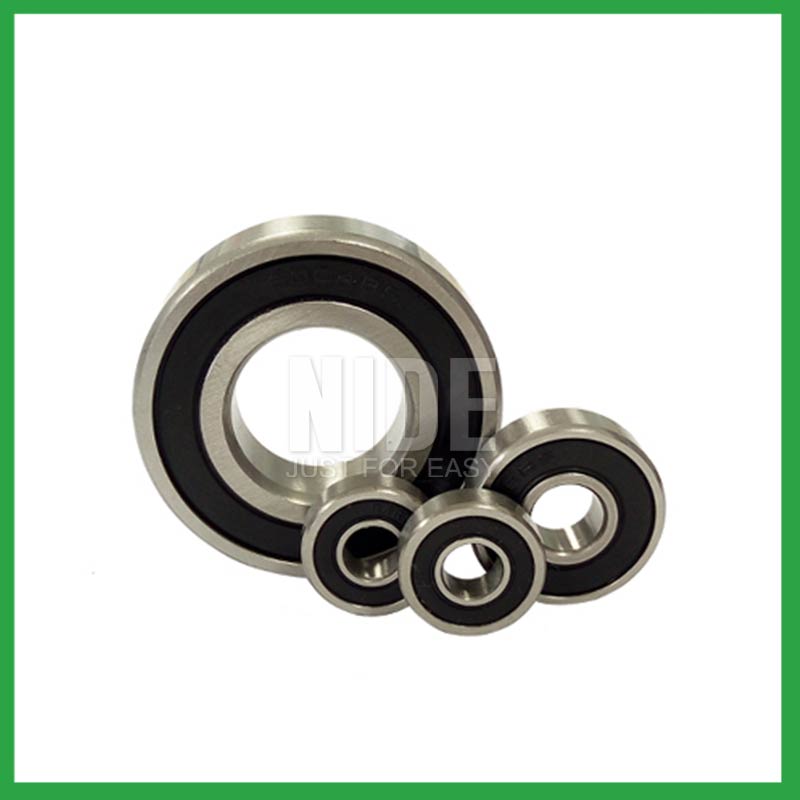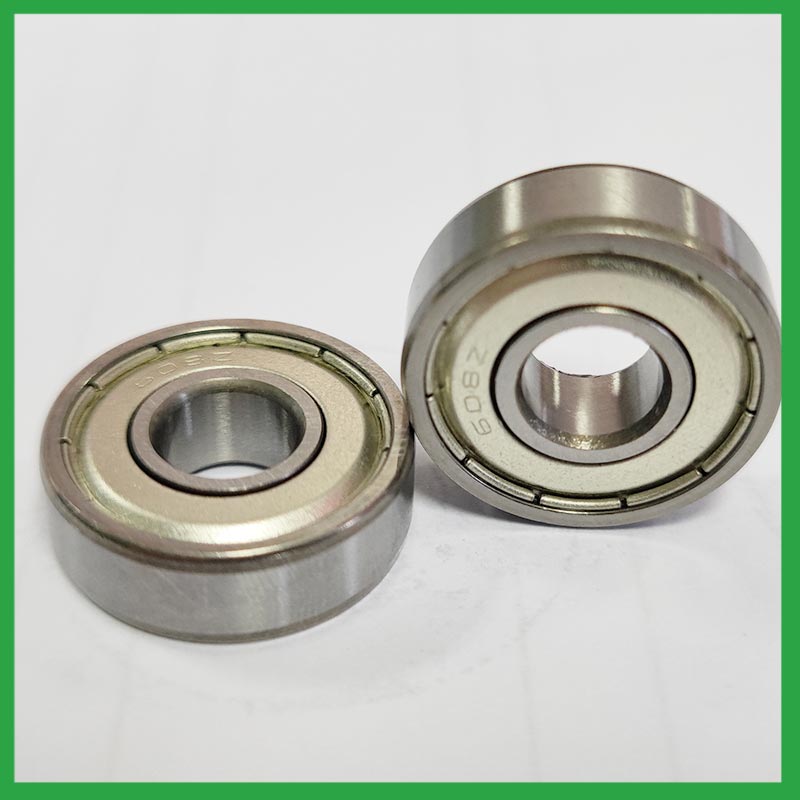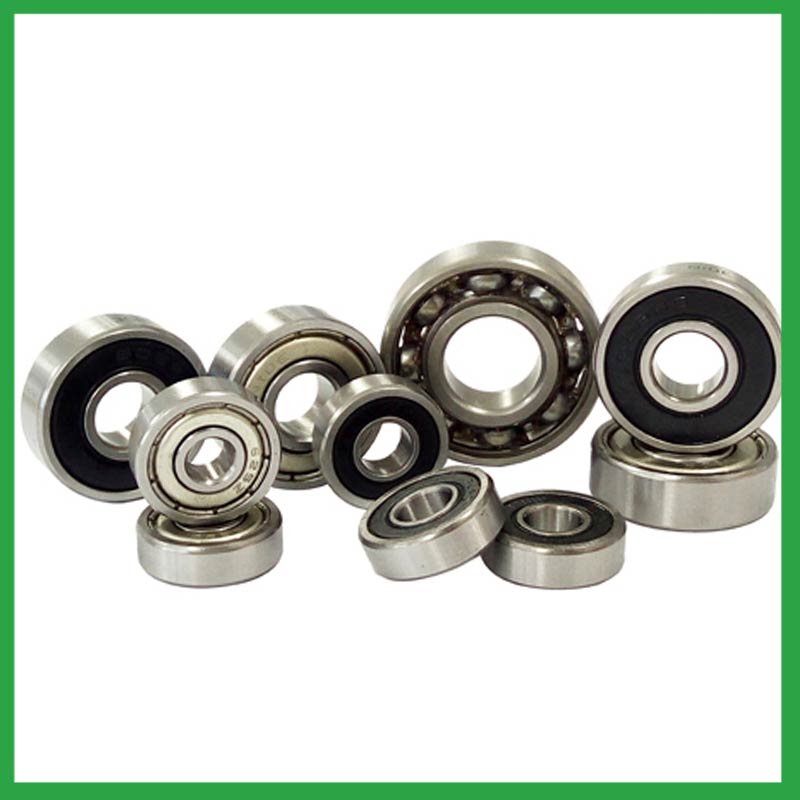Ball bearings are an essential component in various types of machinery and equipment. They are used to reduce friction and provide smooth movement between different parts. There are many different types of ball bearings available, but two of the most common ones are deep groove ball bearings and standard ball bearings. While they both serve the same purpose, there are some key differences between the two.
What is a Ball Bearing?
Before diving into the specifics of deep groove ball bearings and standard ball bearings, it is essential to understand what a ball bearing is. A ball bearing is a type of rolling element bearing that uses balls to reduce rotational friction between moving parts. It consists of an inner and outer ring, with the balls sandwiched in between. The balls roll in between the inner and outer ring, providing low-friction movement. This design allows for rotational motion to be transferred from one part of the machinery to another.
There are various types of ball bearings, each designed for a specific purpose. Some common types include deep groove ball bearings, angular contact ball bearings, and thrust ball bearings. Deep groove ball bearings are the most widely used type of ball bearing and are commonly referred to as single-row radial ball bearings.
What is a Deep Groove Ball Bearing?
A
deep groove ball bearing, also known as a radial ball bearing, is a type of ball bearing with deep, uninterrupted raceway grooves on the inner and outer rings. These grooves allow the bearing to support both radial and axial loads. The depth of the groove determines the load capacity of the bearing.
Deep groove ball bearings have a simple design, making them easy to manufacture and maintain. They are typically made with high-quality steel and are available in both sealed and open designs. The sealed design prevents the entry of contaminants, while the open design allows for easier lubrication and maintenance.
One of the key advantages of deep groove ball bearings is their ability to handle both radial and axial loads, making them suitable for many different applications. They are commonly used in motors, pumps, gearboxes, and other machinery that requires both rotational and axial movement. They are also suitable for high-speed applications due to their low friction coefficient.
What is a Standard Ball Bearing?
Standard ball bearings, also known as deep groove radial ball bearings, are similar to deep groove ball bearings. However, they have a smaller diameter and width and are designed to handle radial loads only. Unlike deep groove ball bearings, they do not have a deep raceway groove, and the balls are in direct contact with the inner and outer rings.
Standard ball bearings are commonly made with stainless steel, chrome steel, or ceramic materials. They are used in various applications, including electric motors, appliances, and power tools, where they are required to handle radial loads.
Differences between Deep Groove Ball Bearings and Standard Ball Bearings
1. Design
The most noticeable difference between deep groove ball bearings and standard ball bearings is their design. Deep groove ball bearings have deep raceway grooves on the inner and outer rings, while standard ball bearings have a shallower groove or no groove at all. This design difference allows deep groove ball bearings to handle both radial and axial loads, while standard ball bearings can only handle radial loads.
2. Load Capacity
Due to their design, deep groove ball bearings have a higher load capacity compared to standard ball bearings. The deep raceway groove of deep groove ball bearings allows for more contact between the balls and the inner and outer rings, distributing the load more evenly. This design also enables deep groove ball bearings to handle both radial and axial loads, making them suitable for a wider range of applications.
On the other hand, standard ball bearings have a lower load capacity as they are designed to handle radial loads only. They are not suitable for applications that require both radial and axial movements.
3. Speed
Deep groove ball bearings have a higher speed rating than standard ball bearings. The presence of a deep raceway groove and the ability to handle both radial and axial loads makes them suitable for high-speed applications. They have a lower friction coefficient, allowing for smooth and quick rotational movement.
Standard ball bearings, on the other hand, have a lower speed rating and are not suitable for high-speed applications. Their design does not allow for axial movement, which restricts their use in machinery that requires both radial and axial movement.
4. Lubrication
Another significant difference between deep groove ball bearings and standard ball bearings is their lubrication requirements. Deep groove ball bearings usually have sealed designs or have a space between the inner and outer rings, allowing for easier lubrication. The seals prevent the entry of contaminants, making them suitable for applications in harsh environments.
In contrast, standard ball bearings do not have any seals or spaces between the inner and outer rings, making it more challenging to lubricate them. This makes them more susceptible to contamination and requires more frequent lubrication.
5. Applications
Due to their higher load capacity and ability to handle both radial and axial loads, deep groove ball bearings are suitable for a more extensive range of applications. They are commonly used in high-speed applications, such as electric motors, gearboxes, and pumps. They are also used in automotive applications, including wheel bearings and transmissions. Additionally, they are used in the agricultural, aerospace, and construction industries.
Standard ball bearings, on the other hand, are limited to applications that require only radial movement. They are commonly used in electric motors, appliances, and power tools, where they are only required to handle radial loads.
When choosing between deep groove ball bearings and standard ball bearings, it is crucial to consider the specific requirements of your application. If you need a bearing that can handle both radial and axial loads, deep groove ball bearings are the way to go. If your application only requires radial movement, standard ball bearings will suffice. Whichever you choose, using high-quality, properly maintained bearings will ensure smooth operation and extend the lifespan of your machinery.
Haishu Nide International is a professional manufacturer engaged in bearing research and sales. The factory covers an area of over 9000 square meters and has over 100 employees. The company has modern production equipment and advanced testing instruments. We produce deep groove ball bearings, spherical roller bearings,
magnet,thermal protector,ball bearing,shaft,fan,
commutator, etc. The bearing accuracy is P0, P6, P5, P4 levels, widely used in water pump motor,washing machine motor,air condition motor,electric bicycle motor,compress motor,BLDC motor,single and three phase induction motor. Passed ISO9001:2015 and CE status.
We adopt first-class production equipment and a comprehensive testing system, and hire excellent technical personnel for operation and management. Our bearings are now very popular in the United States, Canada, Türkiye, Russia, Argentina Japan,Georgia and other countries and regions.Nide wishes is to provide world wide customers with one-stop service for the motor manufacturing.


